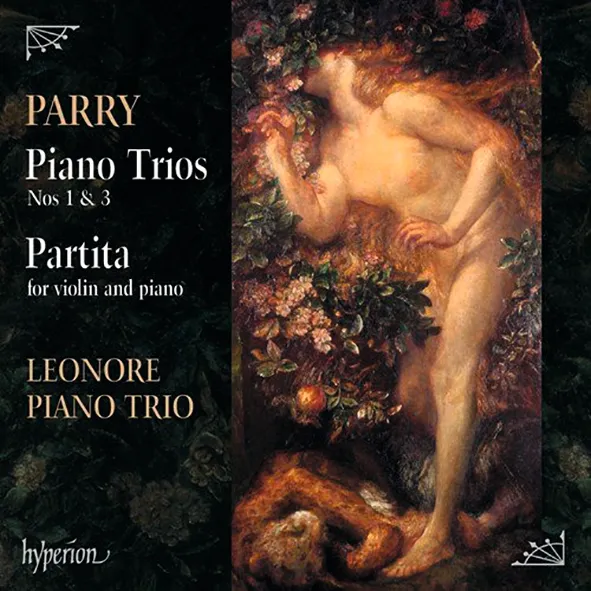
Parry Piano Trio No. 1 in E minor; Piano Trio No. 3 in G; Partita in D minor Leonore Piano Trio Hyperion CDA 68243 69:33 mins
This disc may not quite reach the exalted heights of the Parry songs I reviewed in January (Vol. 3 of English Lyrics and Other Songs on Somm), yet there is a great deal to delight the listener, particularly in the First Piano Trio in E minor of 1877. In the disc’s booklet, Parry biographer Jeremy Dibble notes that Parry composed this while enthralled by Wagner’s music dramas; yet the most evident influence is Brahms, with some brighter Schumann-inspired episodes of a joyousness that anticipates Dvořák (a composer yet to be discovered by the English at that time). I would also have been tempted to say the first movement’s main theme strongly echoes the finale of Brahms’s Fourth Symphony, except Parry’s work predates that masterpiece by eight years. Then follows a scherzo which endearingly suggests the enthusiastic chuffing of a little steam engine. The Leonore Piano Trio’s winsome performance of this engaging movement is what has made me return with pleasure to this altogether attractive work.
The Third Piano Trio, composed some 12 years later in 1889, sounds more sedate and ‘tasteful’ in comparison, perhaps hobbled by Parry’s avoidance of writing anything too technically challenging after experiencing the mishaps of the First Trio’s premiere. Yet its subtle, reflective and sometimes wistful style grows on one with repeated listening. The Leonore Piano Trio play the work with affection, as does their violinist Benjamin Nabarro and pianist Tim Horton the Partita in D minor, Parry’s earnestly stolid tribute (by today’s standard) to the Baroque dance suite.
Daniel Jaffé